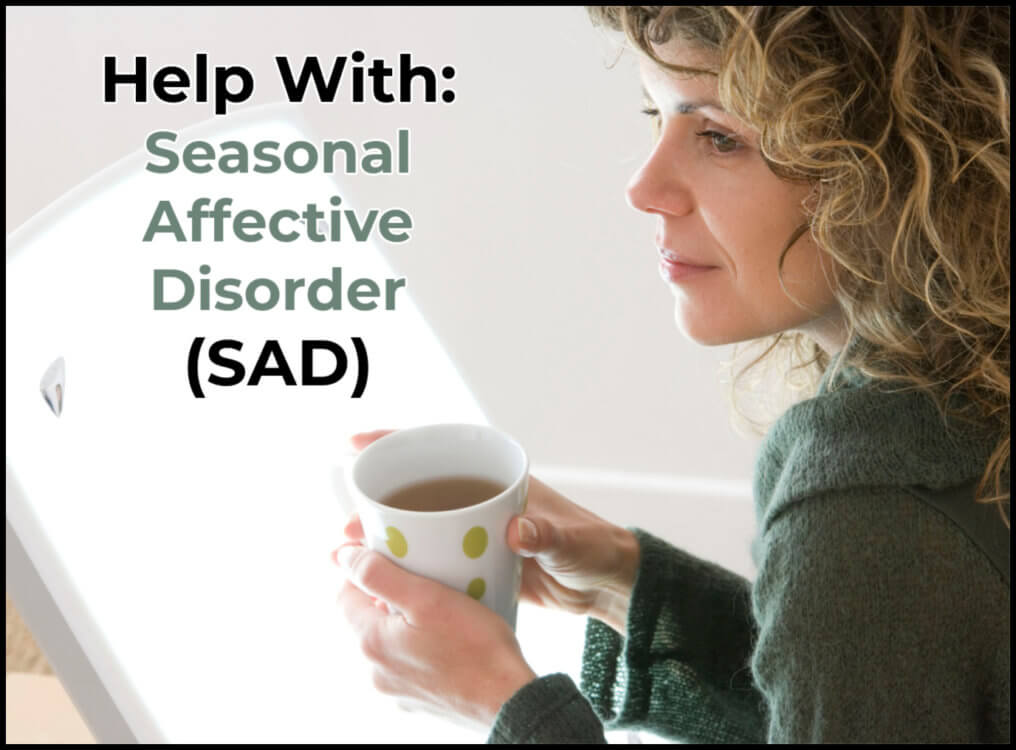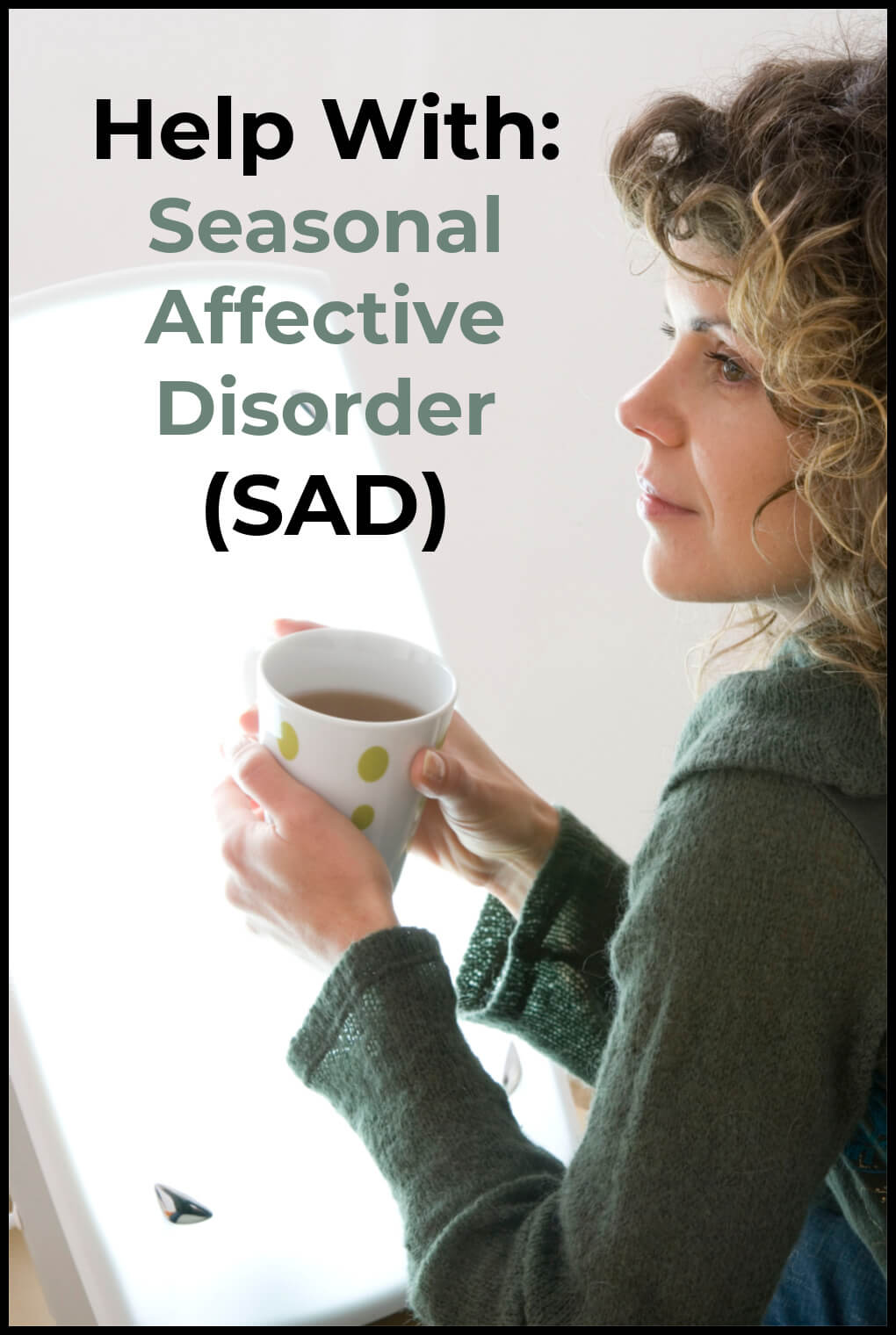
If you suffer from Seasonal Affective Disorder (SAD) you know it is no joke. Today we discuss the symptoms, causes, and solutions of SAD.
I come from Minnesota. During the winter months, there can be days, even weeks at a time that see no sun. Back in the day, we didn’t have a name for the kind of depression that sets in while we were trapped in our homes. Cold, snow, and wind only add to the misery. Seasonal Affective Disorder (SAD) is temporary, but a very real condition that can throw off your entire world. Below are some natural ways to fight the often overwhelming feeling.
Tip: these light therapy lamps are very effective in combating SAD.
Causes and Symptoms of SAD
Casuses
The main causes of SAD are lack of sunshine, lack of human contact, and lack of something to do. These all seem like they are minor, but add them together and they can lead up to discomfort. Most of the people that are affected by SAD are female. It’s unknown if hormones play a part, the fact that women are home with children more than men, or if it’s just plain chemical makeup that is to blame.
Symptoms
Whatever the reason, the symptoms are similar in men and women.
- Oversleeping
- Excessive eating and weight gain
- Tiredness during the day (despite sleeping too much)
- Decreased interest in intimacy
- Dissatisfaction with everything
- Lack of energy
- Hopelessness
- Lack of interest in daily activities
- Lack of interest in social interactions
These are just a few of the feelings that come with SAD. There may be others depending on individual interactions and situations.
The good news is that there is help, and often these things can be accomplished on your own.
Natural ways to treat Seasonal Affective Disorder
One of the main things in fighting SAD is realizing what is going on. It’s one thing to question why you may be tired all the time, or have no interest in going to meet with a friend for lunch, but it’s a whole other thing to realize “why” you feel this way. You could be going through many other things, like a hormonal shift, depression, grief, divorce, or any other of many emotional events that impact us. Narrowing it down will help you deal with it. Here are a few helpful ideas:
New Experiences
Plan something to look forward to. When you get into a set routine, you come to expect the same results. Planning something as simple as a drive in the country can help boost your mood.
Hiking
Go for a hike. Even in the dead of winter, a hike in the woods can help you to connect with nature and appreciate its beauty.
Exercise
Exercise daily. Whether it’s at a gym, going for a hike as above, or getting out the Jazzercise tapes, exercise can help to get your blood flowing.
Light Therapy
Light therapy has proven successful in combating the seasonal affective disorder. There are light therapy lamps that simulate sunlight and can be used for SAD. There are many available for under $30.
Vitamin D
Take vitamin D. Sunlight produces vitamin D in your body. You can get a jump on that by adding vitamin D to your diet.
Proper Snacking
Snack on nuts and dried fruit. Nuts have good fats, protein, and minerals while fruits have concentrated complex carbohydrates, vitamins, and minerals. By combining the two you get lots more nutrients than chips or soda.
Sunrises
Check out the sunrise. Even if it is cloudy, the sun still rises, is often much prettier with the clouds, and helps with seasonal affective disorder.
Massage
Get a massage or do something good for yourself. By allowing yourself rewards, you have something else to look forward to.
Rest
Get plenty of rest. Oversleeping can be a symptom of not getting enough rest. Your body may be telling you to slow down.
Hydrate
Drinking more water helps keep seasonal affective disorder at bay. It’s easy to get dehydrated even in the winter.
Schedules
Stick to a schedule. By having a set schedule, you make yourself get up at a certain time, go to bed at a set time, and so on.
Candles
Light a candle. I love candles and it always feels like I’m doing something special for myself when I light one.
Serve Others
Volunteering and doing something for others always makes me feel good. It’s my most effective solution for seasonal affective disorder. I volunteer with a local food distribution system growing produce and herbs for them. In the winter months, I volunteer by sorting food that comes from grocery stores and then also at the drive-through markets that they sponsor.
Music
Listen to your favorite music. Nothing puts me in a good mood faster than hearing my favorite songs come on the radio.
Children and Pets
Play with your kids. Ok, so my kids are goats, real kids! Abby always put me in a good mood with her antics. You just never know if she’ll jump on the seat next to you or plop down in the snow or grass. She’s very good at making me laugh!
Bonus Tip for Seasonal Affective Disorder
And one bonus method, or maybe a cumulation of all of the above, be kind to yourself. During the last two years, facing isolation, lack of stimulation, and fear, it’s been really easy to get discouraged, Allow yourself to feel all of the emotions but don’t get mad at yourself for how you feel.
Do you have any tips to fight Seasonal Affective Disorder? Tell us how you cope with it.
*******




Anybody with proven methods aside from light therapy, I’d love to hear them.
I have a tea that I give to my husband for SAD.
Beautiful article!